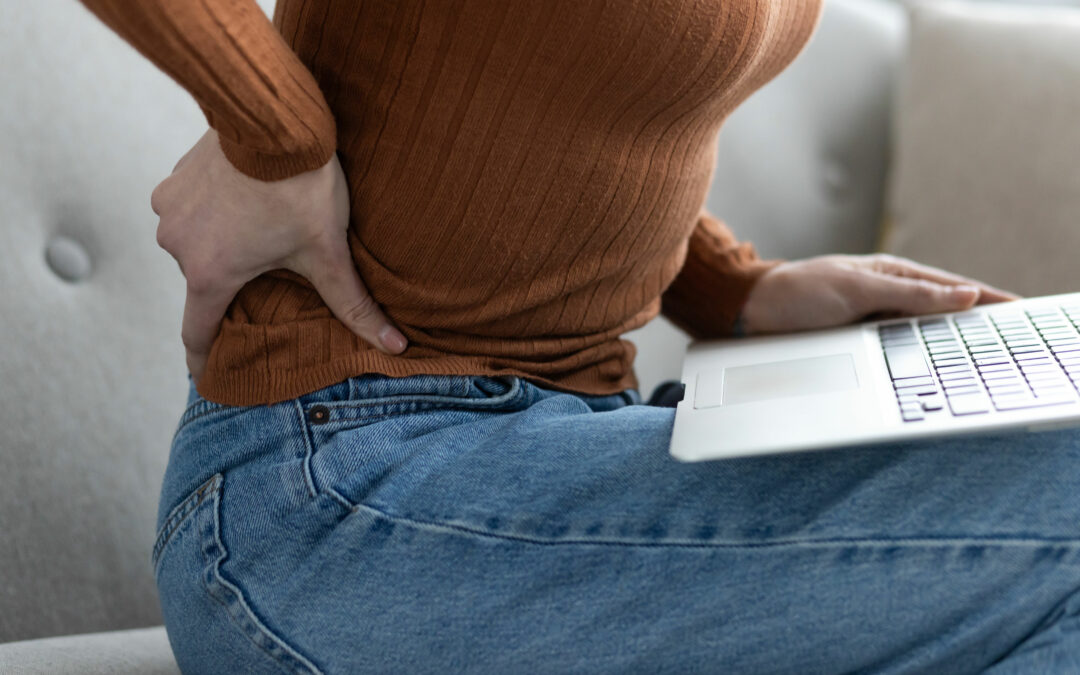Maybe you merely bent down to tie your shoelace or reach for something on a high shelf, and suddenly, a sharp pain shoots through your back. Back pain is one of the most common health complaints, affecting millions of people worldwide. It can range from a dull, constant ache to a sudden, sharp sensation that leaves you incapacitated.
But what exactly causes back pain? While the answer isn’t always straightforward. However, there does tend to be a few common culprits. So, let’s get down to it. Why are you experiencing back pain?
1. Poor Posture and Ergonomics
In our modern, technology-driven world, poor posture has become an epidemic. Hours spent hunched over desks, slumped on couches, or craning our necks to look at smartphones can wreak havoc on our spines.
Poor posture puts unnecessary stress on your back muscles and spine. Over time, this can lead to:
- Muscle strain and fatigue
- Misalignment of the spine
- Compression of spinal nerves
- Accelerated wear and tear on spinal structures
The rise of remote work has exacerbated this issue, with many people working from makeshift home offices with suboptimal ergonomics. Improper desk and chair height, poorly positioned computer screens, and lack of lumbar support can all contribute to back pain.
To combat this, focus on maintaining good posture throughout the day. Ensure your workstation is ergonomically set up, take regular breaks to stretch and move, and be mindful of your posture when using mobile devices.
2. Muscle Strain and Overuse
One of the most common causes of back pain is muscle strain or ligament sprain. This can occur from:
- Lifting heavy objects improperly
- Sudden movements or twisting
- Overstretching
- Sports injuries
- Repetitive motions
When muscles or ligaments are stretched beyond their limits, tiny tears can occur in the tissue. This leads to pain, stiffness, and sometimes muscle spasms.
Overuse injuries are particularly common in people who engage in repetitive activities, whether through work or sports. For example, a construction worker who frequently lifts heavy materials or a tennis player who repeatedly swings a racket may develop back pain over time.
So, what can you do about it? Well, prevention is key here. Learn proper lifting techniques, warm up before physical activities, and vary your movements to avoid overuse. If your job involves repetitive motions, take regular breaks and incorporate stretching into your routine.
3. Degenerative Disc Disease
As we age, the discs in our spine naturally begin to wear down. These discs act as cushions between the vertebrae, absorbing shock and allowing for flexibility. When they degenerate, it can lead to:
- Reduced shock absorption
- Decreased spinal flexibility
- Nerve compression
- Bone spurs
Degenerative disc disease isn’t actually a disease but a natural part of aging. However, factors like genetics, smoking, obesity, and physical trauma can accelerate this process. Symptoms can include chronic low back pain that worsens with certain movements, numbness or tingling in the extremities, and weakness in the legs or feet.
While you can’t stop aging, you can take steps to maintain spinal health. Regular exercise, maintaining a healthy weight, and avoiding smoking can all help slow down disc degeneration.
4. Herniated or Bulging Discs
Closely related to degenerative disc disease, herniated discs occur when the soft inner material of a spinal disc pushes through a crack in the tougher outer layer. This can irritate nearby nerves, leading to pain, numbness, or weakness in an arm or leg.
Herniated discs can be caused by:
- Age-related wear and tear
- Sudden strain from lifting or twisting
- Traumatic injury
Often, herniated discs occur in the lower back, but they can also affect the neck. The pain from a herniated disc can be excruciating and may radiate along the affected nerve path.
5. Spinal Stenosis
Spinal stenosis is a narrowing of the spaces within your spine, which can put pressure on the nerves that travel through the spine. This condition most commonly occurs in the lower back and the neck.
Causes of spinal stenosis include:
- Age-related changes in the spine
- Arthritis
- Spinal injuries
- Spinal tumors (rarely)
Symptoms can include pain, numbness, muscle weakness, and problems with bladder or bowel function in severe cases. Many people with spinal stenosis find that their symptoms worsen when walking or standing for long periods.
While spinal stenosis can’t always be prevented, maintaining good spinal health through regular exercise, proper posture, and a healthy lifestyle can help reduce your risk.
Understanding these major causes of back pain is the first step toward better spinal health. While some factors, like age-related changes, are beyond our control, many causes of back pain can be prevented or managed with proper care and attention. And most of these issues can be treated with gentle chiropractic care, such as your Bessemer chiropractor at Premier Chiropractic Center.
Ready to take control of your spinal health? Book your appointment today. Our experienced team can help identify the root cause of your back pain and develop a tailored treatment plan to get you back to feeling your best.

Recent Comments